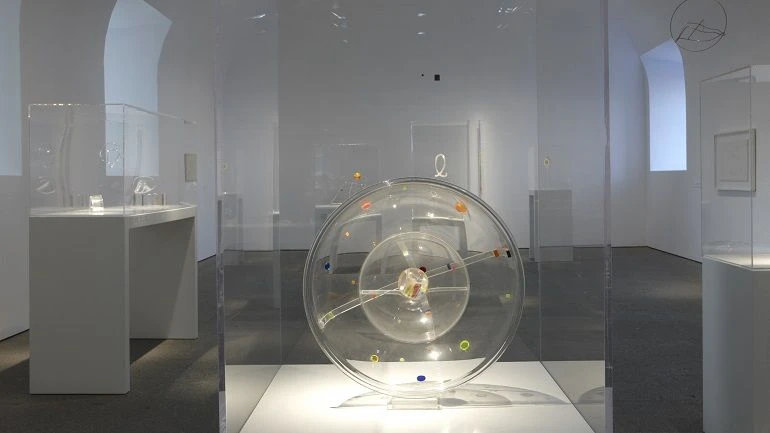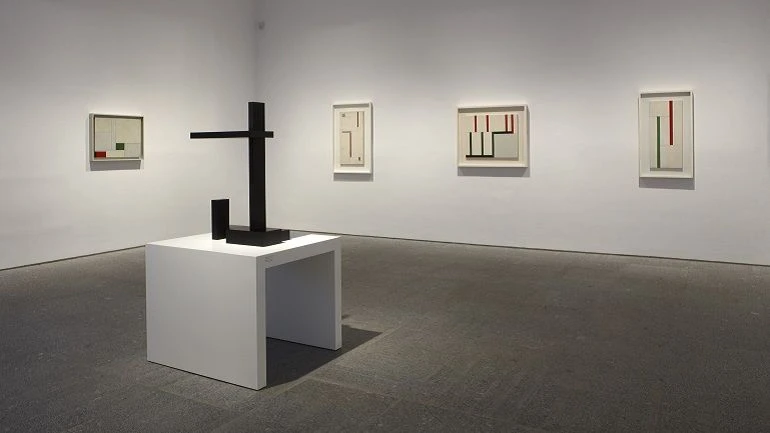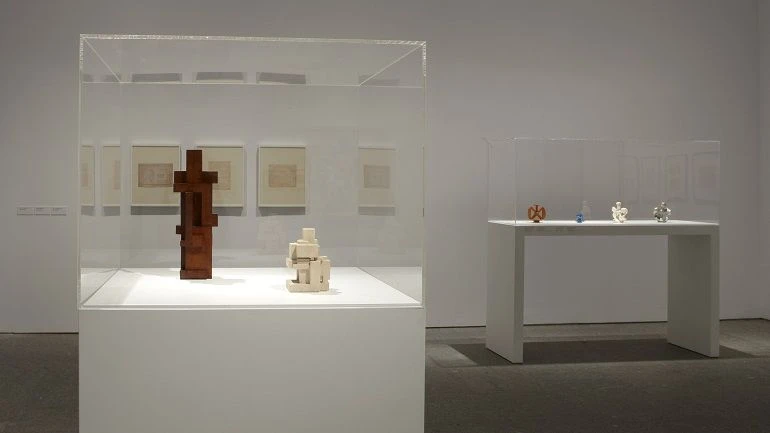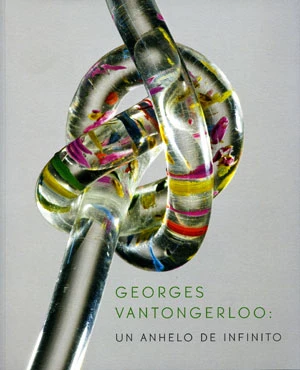Georges Vantongerloo
A Longing for the Infinity
Vantongerloo forms part of Neo-plasticism, which emerges in Holland and adheres to the experience of past avant-garde movements as well as being influenced by the abstract work of Piet Mondrian, Kazimir Malevitch and Wassily Kandinsky. In 1917 Vantongerloo is a co-signator of the 'De Stijl' (The Style) manifesto along with Mondrian and Theo Van Doesburg, who also stand out for their own theoretical visions. In the Thirties he partakes in the Abstraction-Création movement as his painting follows strictly geometrical, and later algebraic, principles; thus he becomes the founder of mathematical thought in the art of our times. The works are based around straight angles and the relationship between lines and surfaces of plain colours, while his sculptures focus on the relationship between volumes, which sees him become a true pioneer in the realm of abstract sculpture. At the end of the Thirties he introduces curved lines into his paintings, enabling him to develop a more freer and open space in works that represent a unique chapter in the history of abstract painting.
After 1945 he leaves behind any references to constructed geometry and his abstract universe becomes increasingly more cosmological with series of wire pieces, plexiglass models in the form of a prism and paintings in which he endeavours to find an aesthetic equivalent to cosmic phenomena (radiation, radioactivity, fission, electromagnetism, attraction and repulsion and nebula). It is safe to say that throughout the course of his oeuvre, Vantongerloo pursues the notion of the infinite and the immeasurable, the only profound changes being in his way of expressing them. The sense of fluidity in the forms of Vantongerloo's later works, the conciliation of the physical, the biological in the plasma-esque flows or the force fields, prove to be extremely contemporary and are in perfect symphony with the disclosure of scientific knowledge in the cosmos.
Artists
Organised by
Museo Nacional Centro de Arte Reina Sofía
Image gallery



